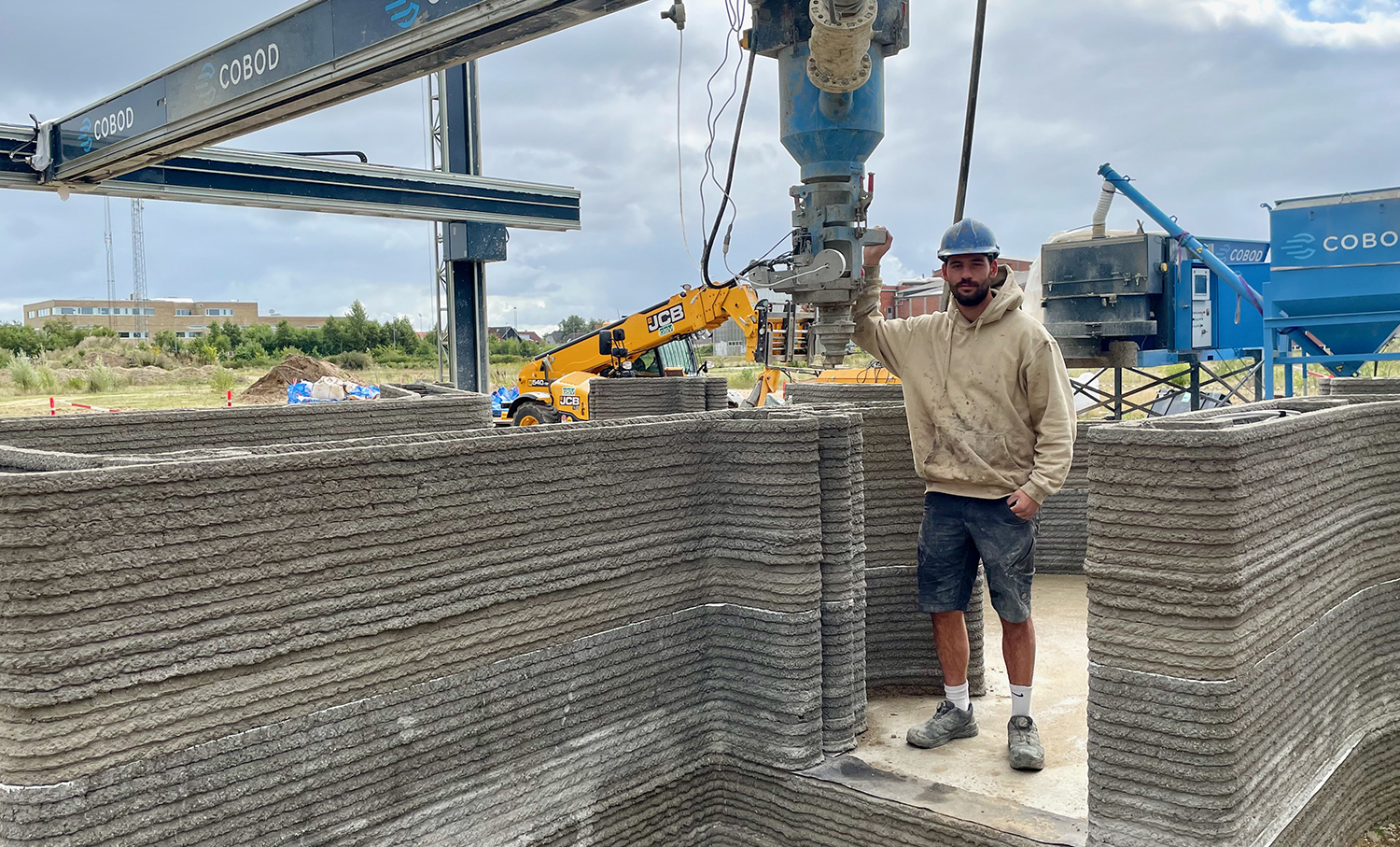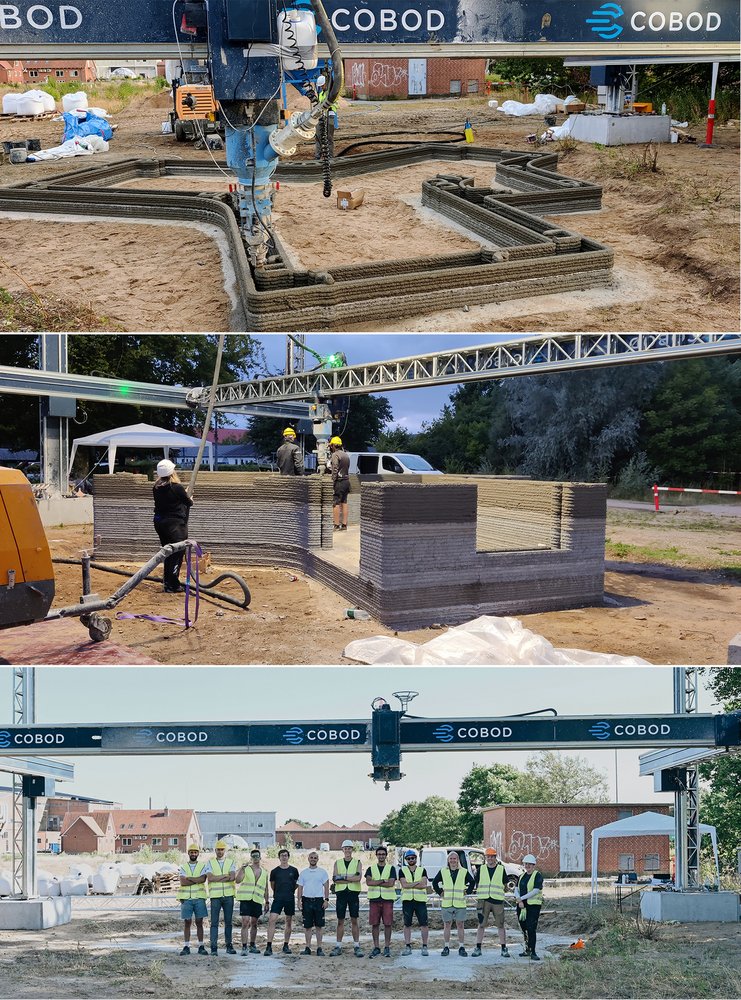Hasan is 3D printing a tiny-house in Holstebro
Hasan Alsofi graduated as a construction engineer in January 2021. He has now established a building contractor company called 3DCP with his friend Mikkel. Together with the Municipality of Holstebro, they are now building the company's pilot project. Their dream is to become Denmark's first 3D-print contractor and to completely revolutionise the construction industry.

In the centre of Holstebro, a stone's throw away from the station, a completely new kind of house is rising to see the light of day. The contractors, 3DCP ApS, are building a prototype 37-square-metre, architect-designed 3D-printed tiny house in collaboration with the Municipality of Holstebro, Saga Space Architects, Bygkontrol ApS and Cobod A/S.
Behind 3DCP are the two student friends, Hasan Alsofi and Mikkel Brich. Both are graduates from Aarhus University, Hasan in construction engineering and Mikkel in law, and they are now about to completely rewrite the rules for one of the world's oldest industries.
"With the help of modern 3D printing technology, we can build better, cheaper, more exciting and sustainable buildings. And we can build them much faster. 3D printing is no doubt a huge milestone for the construction industry and the methods that have been the standard for centuries. And it’s fantastic to see the prototype rise up layer by layer, and see our vision become a reality," says Hasan Alsofi.
- ALSO READ: Here's tomorrow's green construction site
The two friends founded the company after completing their studies. They "played with the idea of 3D-printed buildings, because we thought it was cool and super efficient," explains Hasan. Mikkel comes from Holstebro and he knew about a vacant building site, so he contacted the municipality, who were immediately ready to join the project:
"The enquiry from 3DCP is a really interesting initiative and it may show us something about the construction methods and living forms of the future. Thanks to the innovative processes in 3D printing, we can build new and sustainable buildings in less time, and this will release time and expertise to refine other processes," says Thomas Leerberg, head of planning at the Municipality of Holstebro.
(The article continues below the pictures)

First 3D-print of a tiny-house in Holstebro. The plan is many more and that makes good sense, says Kasper Lynge from Aarhus University, arguing that the technique allows for less material waste, and is both cheaper and faster than the traditional way of building houses. Photo: Private photos.
With 3D-printed houses, you can build faster, greener, cheaper and with greater architectural freedom. The raw house of 37 square metres can actually be built in just eight hours, and this could help to release resources to build better, and focus on a better indoor climate and more sustainable solutions in general.
“It’s crucial that we have more green, healthy and sustainable solutions for the building sector,” says Kasper Lynge, deputy head of department at the Department of Civil and Architectural Engineering at Aarhus University.
Today, buildings account for approx. 40 per cent of Denmark's total energy consumption, 65 per cent of buildings were built before 1980, when there were no real requirements for energy consumption and indoor climate, and producing materials for the construction industry is one of the world's largest contributors to climate change.
- ALSO READ: How snakeskin can inspire to safer buildings
"We're looking into the future with this pilot project," says Kasper Lynge. "Automation and digitalisation are becoming increasingly important in construction for several reasons. Firstly, we can build faster and cheaper and with completely new shapes than previously, and secondly, we can minimise waste and use fewer materials. "
He continues:
"Right now, we use concrete, but in the long term, with 3D printing, we'll be able to start looking at other materials such as clay. We look forward to following the project and finding out more. We need people like Hasan and Mikkel, who just throw themselves into it. This is how we can develop the construction industry."
The Department of Civil and Architectural Engineering is supporting the project through knowledge collaboration. When the prototype is complete, the plan is for the university to carry out measurements in the building and to use this knowledge on engineering programmes.
The plan is to build prototype tiny houses on the site in Holstebro. However, the local authority would like to go further than just prototypes, and Thomas Leerberg says that he expects the municipality to have 3D-printed tiny houses ready for habitation in a year and a half, if everything goes according to plan.
Contact
Kasper Lynge, deputy Head of Department, Department of Civil and Architectural Engineering
Mail: kl@cae.au.dk
Tel.:+45 93508712
Jesper Bruun
Science journalist
Mail: bruun@au.dk
Tel.: +45 42404140
